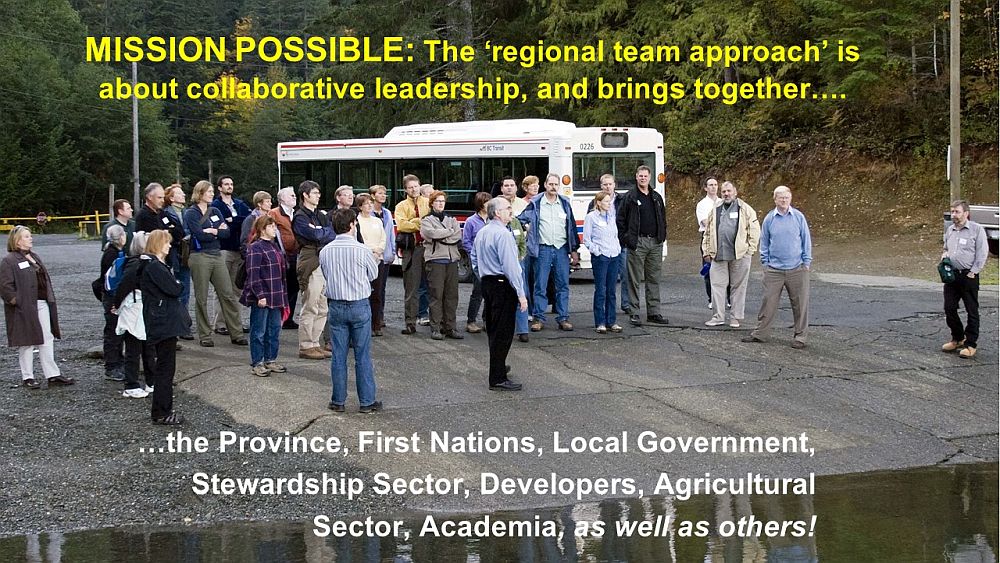|
“As the Executive Director, I am proud to announce that the Partnership has reached the 10-year milestone as a legal entity. But our history began long before 2010. Our “partnerships & collaboration journey” actually commenced some two decades earlier. A group of like-minded and passionate individuals, including representatives of three levels of government, came together as a committee and created a “water roundtable” that evolved over time into The Partnership.,” states Kim Stephens, Waterbucket eNews Editor and Executive Director, Partnership for Water Sustainability in British Columbia.

“And what was the mission of this water roundtable? Champion a water-centric approach to use and conservation of land. Develop tools, resources and programs to support water-centric planning.”
“All of us learn from stories. For this reason, and to celebrate our first decade since incorporation, I am excited to share this “story behind our story” on behalf of my teammates on the Partnership leadership team. We do so with the hope that a look behind-the-scenes will strike a spark and inspire you, the reader, to make a difference in your own community.”
“Time has passed quickly. Has it really been a decade? So much water under the bridge, literally. In taking stock of the Partnership’s rising trajectory, my teammates and I feel good about the Partnership’s track record of accomplishment through partnerships and collaboration with others.”
“The Partnership’s guiding philosophy is to help others be successful. When they are successful, we are successful.”
“The Partnership is led by a team of mission-focused volunteers, elders and collaborators. These individuals bring experience, knowledge and wisdom to the Partnership roundtable. This enhances the effectiveness of the Partnership as the hub for a convening for action network. Although many on the Partnership leadership team have retired from their day jobs, the water-centric mission continues.”
“We keep raising our game. And so do our collaborators. Shared successes leads to more successes. We judge progress by the distance travelled, not the distance remaining. We are optimistic about the future. Over the course of this past decade, the tide has turned. There is a track record to continue building upon.”
|








